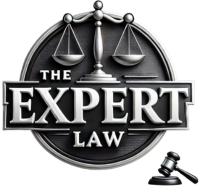Introduction
Legal documents are vital instruments that lay the groundwork for legal proceedings, holding significant weight in defining obligations, rights, and responsibilities. Poorly structured documents can lead to costly legal disputes, causing delays and confusion among the parties involved. Therefore, crafting these documents with precision and care is paramount. Whether it involves complex corporate contracts or basic agreements, consulting a professional, like a Business Attorney, can be invaluable in ensuring that documents meet necessary legal standards.
In today’s fast-paced legal environment, the intricacies of legal documentation are more pronounced. The clarity provided by well-crafted legal documents helps mitigate potential conflicts and streamlines the legal process by clearly outlining expectations and obligations.
The Anatomy of a Legal Document
Every legal document comprises essential structural elements that define its purpose and enforceability. These include an informative title, identification of involved parties, and a detailed discussion of terms and conditions. Each section should serve a clear function, eliminating ambiguity and enhancing comprehension. The title should appropriately convey the nature of the agreement or document to give a clear idea of what is included therein.
Another critical aspect is organization. Legal documents should follow a logical sequence that mirrors the natural flow of an agreement or procedure. Effective organization not only aids in readability but also ensures that each party’s obligations are unambiguously presented, providing a roadmap to what the document seeks to achieve.
Simplifying Legal Jargon
Legal jargon often acts as a double-edged sword, providing necessary specificity while potentially alienating those unfamiliar with legal terminologies. The crux of adequate legal documentation lies in balancing precision and readability. Techniques like substituting legalese with plain language while preserving the document’s legal integrity can make a difference.
For instance, instead of using convoluted phrases, utilize clear and straightforward language that accurately conveys meaning without sacrificing legal correctness. This practice ensures that even individuals with lesser legal knowledge can understand the document, thus reducing the chance of misinterpretation.
Accuracy and Attention to Detail
Attention to detail is pivotal in drafting legal documents, as even minor errors can lead to significant legal pitfalls. Common issues such as typographical mistakes, inclusion of incorrect facts, or inconsistencies can undermine a document’s validity. Therefore, rigorous proofreading and multiple peer reviews are essential to eliminate oversights that might jeopardize the document’s purpose.
A structured review process ensures consistency and accuracy throughout the document. Such diligence often involves:
- Checking statements’ factual accuracy.
- Verifying the inclusion of essential clauses.
- Ensuring that terms are consistent with the intended meaning and legal standards.
The Role of Technology
Legal document preparation is no exception in an era where technology permeates every facet of daily life. Legal professionals can now leverage technology to enhance accuracy and efficiency in document preparation. From drafting software that guides the user through complex legal structures to comprehensive digital document management systems, tech tools are reshaping the legal landscape. Exploring the latest advancements in legal technology is crucial for staying competitive.
Unfortunately, failing to incorporate these technological advancements might lead to inefficiencies or errors that could have been easily avoided. Therefore, using such technology ensures that legal papers stay current and relevant while increasing efficiency and reducing the possibility of human mistakes.
Dive into the world of Legal Service with The Expert Law. Visit our website and unlock endless inspiration!





